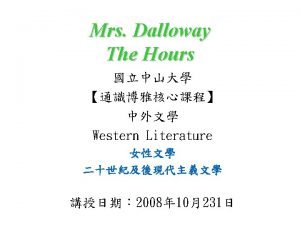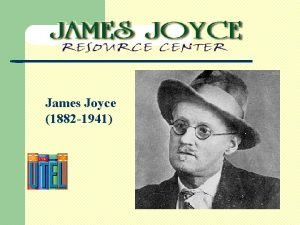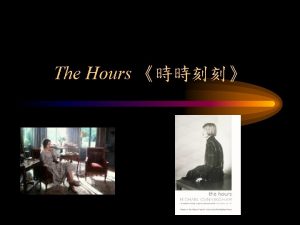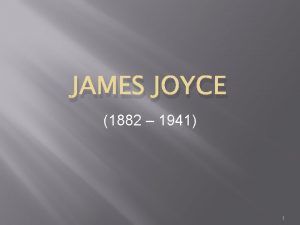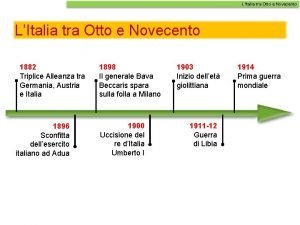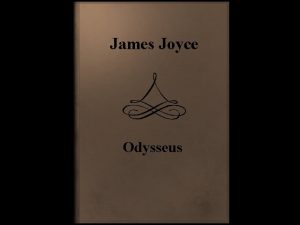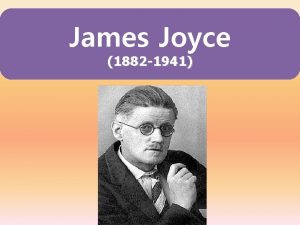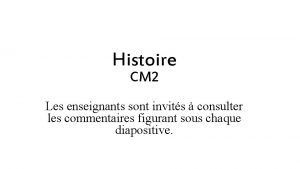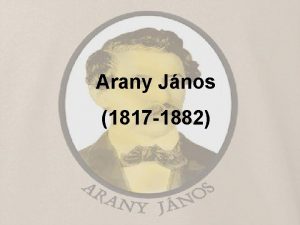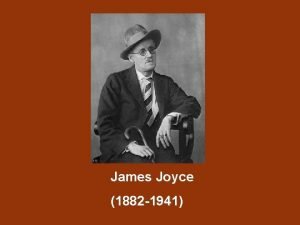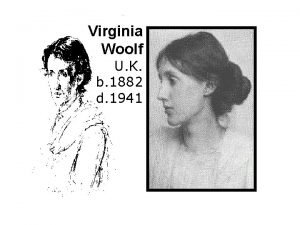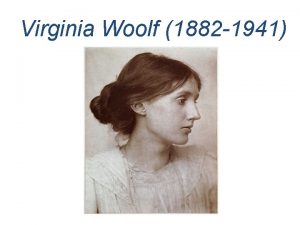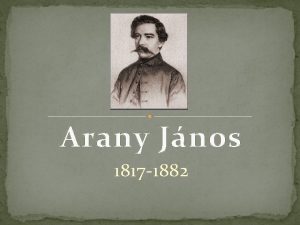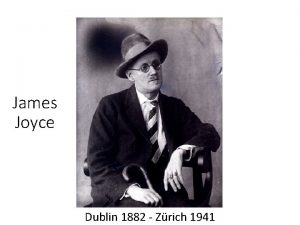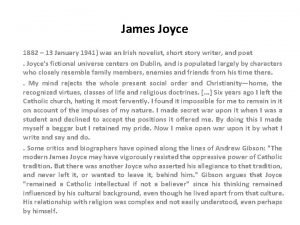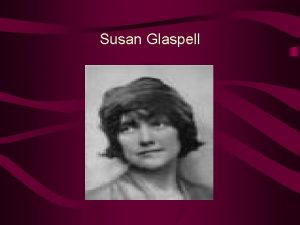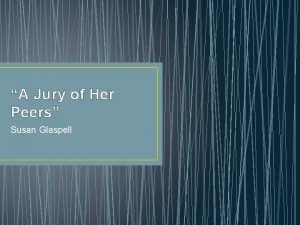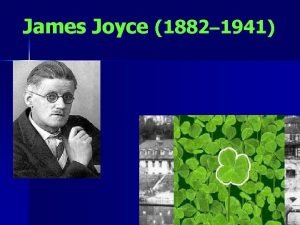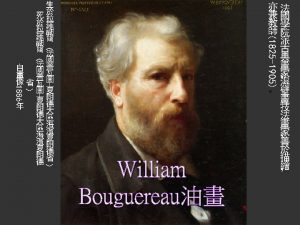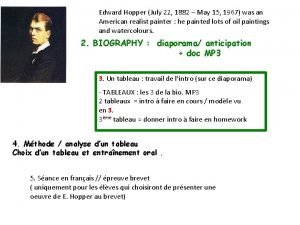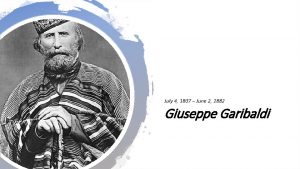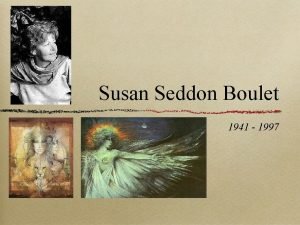Susan Glaspell Susan Glaspell On July 1 1882
























- Slides: 24

Susan Glaspell

Susan Glaspell • On July 1, 1882, Susan Glaspell was born in Davenport, Iowa. She excelled in academics as a student, studying Latin and journalism. After graduation from high school, she worked as a newspaper reporter for the Davenport Morning Republican, then as the society editor for the Weekly Outlook. • In an age when few women went to college, and even fewer actually sought careers beyond menial labor outside the home, Glaspell did both, graduating from Drake University with a Ph. D. in Philosophy in 1899, and immediately embarking on a lifetime of freelance journalism, playwriting, and fiction writing.

Susan Glaspell • Immediately after college she resumed her career as a journalist, writing for the Des Moines News. In 1900 she was assigned to cover the trial of Margaret Hossack, an Iowa farmer's wife accused of murdering her husband while he slept. The trial would later become the basis for Glaspell's short story "A Jury of Her Peers" and one-act play Trifles.

Trifles • Susan Glaspell's one-act play, Trifles, is based on actual events that occurred in Iowa at the turn of the century. • From 1899 -1901 Glaspell worked as a reporter for the Des Moines News, where she covered the murder trial of a farmer's wife, Margaret Hossack, in Indianola, Iowa. Hossack was accused of killing her husband, John, by striking him twice in the head with an ax while he slept.

• Initially it was assumed that burglars had murdered the farmer, but a subsequent sheriff s investigation turned up evidence suggesting Mrs. Hossack was unhappy in her marriage. Ultimately, she was charged with and found guilty of the crime and sentenced to life in prison. • Over the course of sixteen months, Glaspell wrote twenty-six articles covering the case, from the announcement of the murder until Hossack's conviction. The author found herself feeling more and more sympathy for the accused, in spite of the grisly nature of the crime.

• Years later, Glaspell and her husband, George Cook, along with some friends, founded the Provincetown Players, an amateur theatrical company on Cape Cod, Massachusetts. • In 1916 the group presented a summertime series of plays that included Eugene O'Neill's Bound East for Cardiff. In need of a new play to end the season, Cook suggested Glaspell should write a one-act for the company. Her memory of the Hossack trial inspired Trifles.

Trifles • Trifles is a murder mystery that explores gender relationships, power relationship between the sexes, and the nature of truth. • In the play, the farmer and his wife never actually appear; instead, the story focuses on the prosecutor, George Henderson, who has been called in to investigate the murder; Henry Peters, the local sheriff; Lewis Hale, a neighboring farmer who discovered Wright's body; and Mrs. Peters and Mrs. Hale, wives to the two local men.

Historical Context • Women's Issues • In many ways, Susan Glaspell's success at the turn of the century signaled a new age for women, and Trifles represents the struggles women of her era faced. • In 1916, the year Glaspell wrote Trifles for the Provincetown Players, some of the important issues of the day were women's suffrage, birth control, socialism, union organizing. Women had not yet achieved the right to vote.

Theme • Gender Differences • Perhaps the single most important theme in Trifles is the difference between men and women. The two sexes are distinguished by the roles they play in society, their physicality, their methods of communication and vital to the plot of the play their powers of observation.

• In simple terms, Trifles suggests that men tend to be aggressive, brash, rough, analytical and selfcentered; in contrast, women are more circumspect, deliberative, intuitive, and sensitive to the needs of others. It is these differences that allows Mrs. Peters and Mrs. Hale to find the clues needed to solve the crime, while their husbands miss the same clues.

• Glaspell differentiates between her male and female antagonists as they enter the Wright farmhouse at the beginning of the play. The men stomp through the door first, and head purposefully toward the stove for warmth. They are the leaders of the community. • While the men bluster and tramp around the farmhouse searching for clues, the women discover bits of evidence in the "trifles" of a farmer's wife her baking, cleaning and sewing. Because the men virtually ignore the women's world, they remain blind to the truth before their eyes.

• the play carefully distinguishes between the affairs of men and the concerns of women. The men intrude on the woman's world, dirtying her towels, scoffing at her knitting and preserves. • As we move into the kitchen, the men are left out and the awful details of Minnie's life are revealed to Mrs. Peters and Mrs. Hale, so that when the men return, we see how blind they are and we, the audience, accept their decision not to reveal Minnie's motive.

One-Act Play • The structure of a play affects all of its most important elements the plot, characters, and themes. An episodic play, such as William Shakespeare's Hamlet, requires many twists and turns of plot, numerous characters and locations, and great stretches of time in order for the story to unfold. • A climactic play, such as Sophocles's famous tragedy Oedipus Rex, typically presents only a handful of characters involved in a single plot, which builds toward a climax the most important moment in the play.

One-Act Play • One of the most restrictive forms is the oneact play, a style favored by Susan Glaspell. In every respect the one-act play is more tightly compressed than a full-length climactic Greek tragedy. Because one-acts are typically short, with playing times of fifteen to forty-five minutes, the number of characters introduced must be limited, and their personalities must be developed










• http: //www. youtube. com/watch? v=Kp. Nuw 0 v. FU 5 E&feature=related • http: //www. youtube. com/watch? v=81 h. Ix. Jb Bh 4 k&NR=1 • http: //www. youtube. com/watch? v=QFUa. C Xv. Ij. Y 4&feature=related
 Trifles quiz answers
Trifles quiz answers 1941-1882
1941-1882 1941
1941 Virginia woolf performer heritage
Virginia woolf performer heritage 1941-1882
1941-1882 Suicide note virginia woolf
Suicide note virginia woolf Re german date coffee co (1882)
Re german date coffee co (1882) 1882-1941
1882-1941 Georges braque le jour
Georges braque le jour 1882 triplice alleanza
1882 triplice alleanza 1817 1882
1817 1882 1941-1882
1941-1882 1941-1882
1941-1882 1941-1882
1941-1882 1941-1882
1941-1882 Loi du 28 mars 1882
Loi du 28 mars 1882 1817-1882
1817-1882 1941-1882
1941-1882 1941-1882
1941-1882 1941-1882
1941-1882 Leslie stephen virginia woolf
Leslie stephen virginia woolf Arany jános gyermekkora
Arany jános gyermekkora 1941-1882
1941-1882 Loi du 28 mars 1882
Loi du 28 mars 1882 1941-1882
1941-1882


